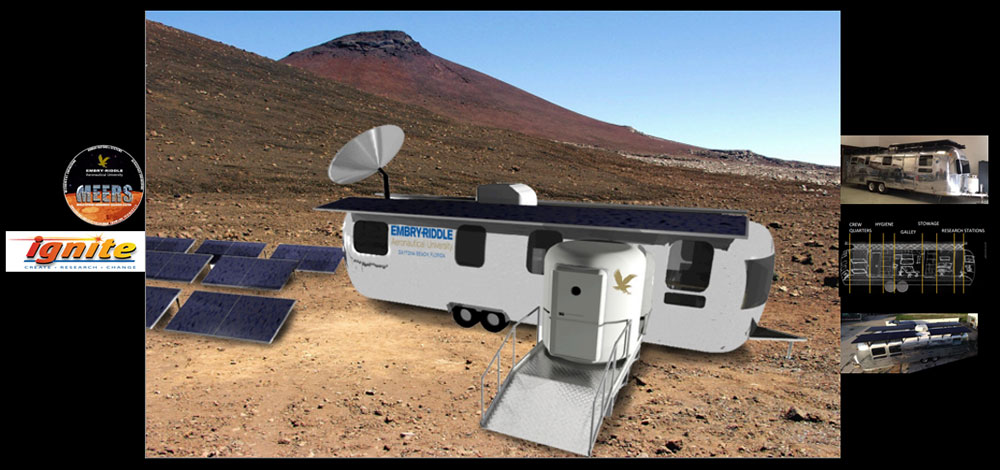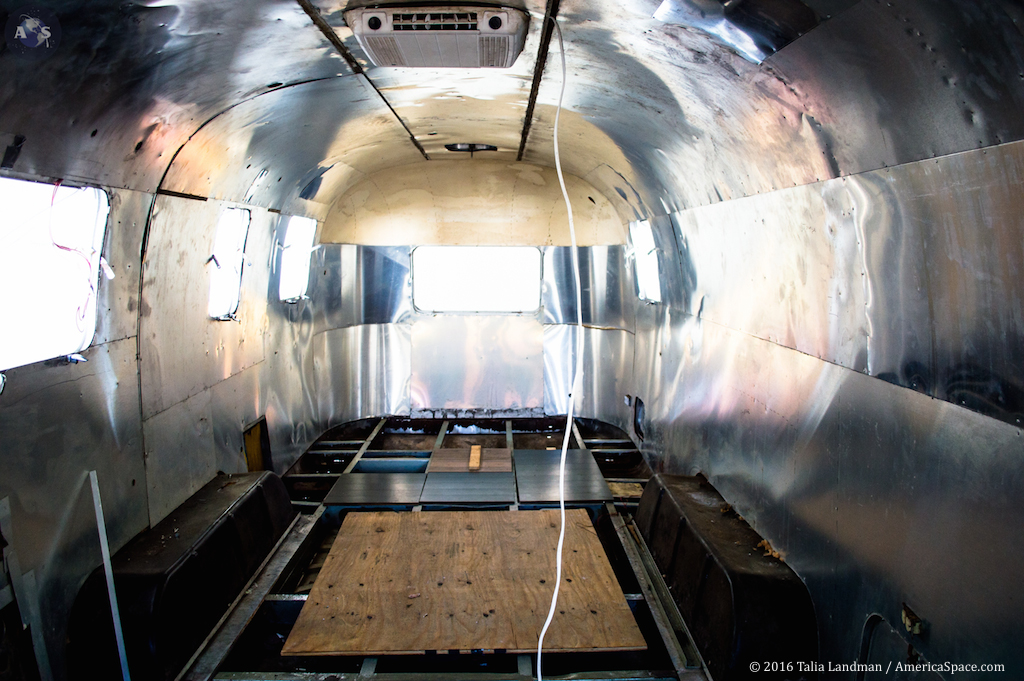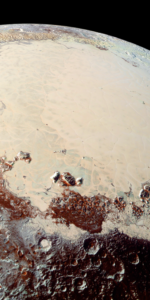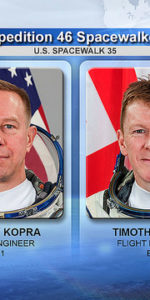
A student-run project at Embry-Riddle Aeronautical University (ERAU), in Daytona Beach, is in the early stages of becoming an advanced space habitat simulator and mobile laboratory designed to study human behavior and new space technologies in extreme environments. Made out of a 31-foot 1976 Airstream trailer, Mobile Extreme Environment Research Station (MEERS) will serve as a testbed that will enable students and faculty to test their experiments and study human factors in a simulated environment similar to Mars and other planets. Important engineering research focused on habitat design will take place on MEERS and evaluate the issues humans may encounter in isolation and confinement.
MEERS has three primary goals: 1) develop a mobile facility to support student research projects related to interactions with autonomous systems and human behavior, 2) provide a “hands on” laboratory design, test, and redesign technologies for long-duration space habitats such as communication systems and architecture, and 3) showcase student research for university events and STEM outreach to middle and high school students.
MEERS will provide crew quarters for up to four individuals, hygiene facilities, a galley, and workstations to conduct science and communication with a MEERS Mission Control Center (MCC) on the campus. In order to complete construction, the MEERS team has started a crowdfunding campaign to raise the funds needed to put the finishing touches on the mobile research station.
“We have to understand how humans can get along for a long period of time, and the technologies that will keep them alive and allow them to be productive,” explained Dr. Jason Kring, MEERS faculty lead and a Humans Factors professor at ERAU. “It’s important for me, as faculty, to see our students applying what they learn in the classroom to a hands on project.”

Work on MEERS began as soon as the old Airbus arrived on ERAU property. Furniture and materials had to be removed from inside the trailer to begin the process of rebuilding. The Airbus was stripped of its exterior clear coat in order to remove oxidation of the aluminum and return it to a glossy finish. As the team continued working on MEERS, they found rust on many important structural components and realized the fresh, grey, and black water tanks will have to be replaced. Renovations to the vehicle also included stripping away the interior vinyl coverings to uncover the original aluminum so that MEERS can use less lighting by reflecting low-powered LED lights off the walls inside. Over 200 personnel-hours went into the first big renovations to MEERS.
MEERS already has a solar panel installed and battery system to provide power. The team purchased desks and monitors for workstations areas and installed bamboo with easy access to the areas under the floor for future design improvements. To complete the renovations, the team will need to purchase materials for these key areas:
- Install electrical wiring and LED lighting = $1,500
- Install flooring and dividers for main areas = $500
- Install a low-water hygiene facility with tanks for fresh, grey, and black (waste) water = $2,000
- Install a small galley for food preparation = $1,000
- Install Wi-Fi network = $300
- Purchase four laptop computers for use by crew during missions = $2,000
- Install two flat-panel displays for crew workstation area = $2,000
“If we put four people in MEERS and have them run a four to five hour simulation, we can manipulate communication delay and manipulate the level of crew anatomy to see how they adapt,” said Dr. Kring to AmericaSpace.
The type of research and experiments that will be conducted on MEERS are currently taking place in desolate desert locations across the country. NASA’s Desert Research and Technology Studies (D-RATS) program has groups from diverse industries and educational backgrounds participating in simulated missions in remote locations. The locations were carefully chosen resemble future deep space destinations. These missions evaluate exploration methods, equipment, and tools that are engineered in laboratory settings in a real world environment. New ideas for developing a space habitat, new space technologies, functioning spacesuits, and bandwidth requirements for communicating with Earth are some of the challenges being explored on these missions. By performing these simulated missions, NASA is recognizing and solving the problems humans may possibly encounter during long duration missions to distant worlds.
At less of a cost, MEERS will provide the same opportunity for university students to conduct missions and experiments like those on D-RATS. This experience will be valuable to the students at ERAU, especially those preparing to enter the professional world and pursue careers in space.

In July 2015, several students from ERAU worked with astronauts living aboard NASA’s Aquarius undersea laboratory during the NASA Extreme Environment Mission Operations (NEEMO) 20 mission. Like D-RATS, NEEMO serves as a testbed for uncovering the possible challenges and necessary resources it will take to survive in isolation for long periods of time.
Kati Anglin, ERAU’s NEEMO Project Lead, applied what she learned in the classroom to a real-life design challenge during the NEEMO 20 mission. Anglin was on a short snorkeling adventure when she found out that a test structure being assembled by two crewmembers outside of Aquarius fell over. Anglin was faced with having to quickly get back to Mission Control and figure out a backup plan.
“We learned to always have a back up plan in every design process,” Anglin told AmericaSpace. “We worked with some of the NASA folks and we came up with new procedures. Our “Plan B” was what the crew wanted to do. They thought of their own plan while we, as the NASA group, were figuring our plan, which shows how interested the team was in assembly. So, that’s really interesting.”
The structure that fell over was a test structure to show construction techniques and how a crew of only two people can assemble something in an unfamiliar environment.
“One issue, the reason why it fell over and broke, was because there was a metal bar on the structure and it kind of looked like a handle,” Anglin explained. “One of the astronauts held on to that bar as a handle to equalize their weight and it broke the whole structure. I should have had in the procedures ‘Caution: Do not hold on to this bar’, or something like that to make sure they were aware that it wasn’t a handle. It was a failure of imagination because I couldn’t imagine someone holding on to that bar.”
Anglin is a student in the Human Factors PhD program at ERAU. Her involvement with NASA NEEMO has opened many doors for her in the space industry and widened her network of potential employers. When MEERS is finished, the mobile habitat will serve as a second mission control for future NEEMO missions, and offer more students the opportunity to receive valuable hands on experience.
“MEERS is a one-of-a-kind facility that we are putting together and it’s a really unique opportunity that we have here,” said Tim Disher, MEERS Program Lead at ERAU. “It can be a stepping stone to launching your own career. We have budget outreach, design teams, construction teams, and software, mechanical, engineering, business and marketing positions. There are a lot of areas of expertise in which students can apply.”
Those interested in supporting MEERS can donate to the MEERS at ERAU Crowdfunding campaign through Feb. 5.
https://www.youtube.com/watch?v=BJAMlgtONtMVideo credit: MEERS / ERAU
Be sure to “Like” AmericaSpace on Facebook and follow us on Twitter: @AmericaSpace
.






Looks like something that was towed out of an Alabama trailer park.
Airstreams are sharp, classic looking mobile units. It looks great. Good job MEERS team!